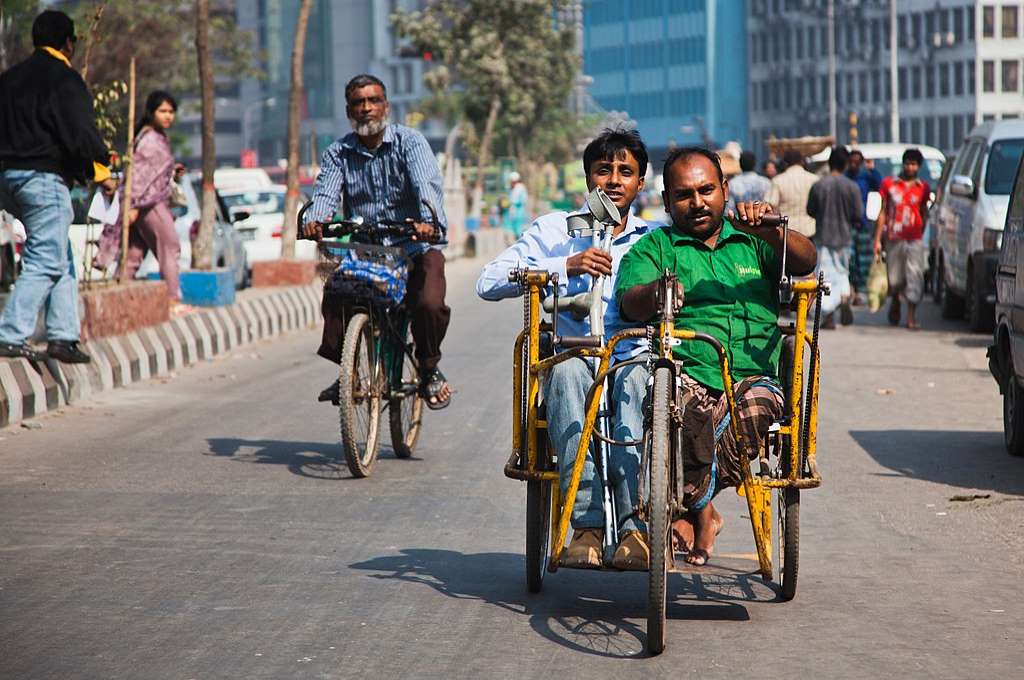Stella Young, a disabled comedian and writer, once said that she wanted to live in a world “where we don’t have such low expectations of disabled people that we are congratulated for getting out of bed and remembering our own names in the morning”.
It is abundantly clear that society has low expectations of the disabled community. However, these expectations are not always expressed in a negative or discriminatory way. They are often cloaked in a seeming concern for the welfare of the disabled community. This makes it difficult to differentiate between active discrimination and attitudes born out of ignorance.
Despite springing from naivete, “benevolent ableism” has the same consequences as active discrimination: the exclusion and marginalisation of the disabled community.
Benevolent ableism operates a framework in which seemingly positive action actually leads to further a stereotyping of disability. One example is the use of the word “divyangjan” by India’s government machinery to describe disabled people. The word “divyangjan” literally means “one with a divine body”. This attempt to eradicate the negative attitudes associated with disability puts the disabled on a moral high pedestal—which makes them unequal. Obviously a divine being cannot be equated with a human.
Even though the United Nations’ Committee on the Rights of Persons with Disabilities has discouraged the usage of such terminology for disabled, the Indian state and even the courts find nothing wrong with it.
The misplaced policies
Benevolent ableism has compartmentalised the spheres in which it is acceptable for the disabled community to be represented—and where they should not. The exclusion originates from the presumption that the disabled will be at a disadvantage in those areas.
For instance, the Supreme Court last year overruled a decision barring people with more than 50% visual and hearing disability from being judicial officers. The court was acting according to an able-bodied performance-based metric and an over-protectionist attitude towards the disabled.
Similarly, earlier this year, a university in Karnal excluded a speech-impaired student from pursuing medical education. But it failed to think about how it could provide accommodative measures, such as offering the student an assistant who could help have conversations with patients. Besides, it was not clear why this individual’s 50% speech impairment was deemed to be a barrier but that an applicant with a 49% impairment would perhaps be given admission.

Another instance in which this excessive protectionism is evident is the fight of disabled people to be employed by departments like the Indian Police Service. Not all police roles require combat or ground services but include administrative and academic roles.
The fact that these applicants are disabled is being used to argue for a blanket exclusion without acknowledging that reasonable accommodation could be made for them by introducing technology that could help police forces to use them in an efficient manner.
Since Indian police forces often have little training in handling of disabled people (as victims, accused or witness), employing members of the community would actually increase the departments’ effectiveness.
The Rights of Persons with Disabilities Act, 2016, mandates a 4% reservation in public employment—but it is up to individual departments to decide in what roles applicants should be employed. There is no uniform set of principles applicable across departments. So candidates deemed appropriate for a role in one department could be ruled unfit for a similar role in another department.
To avail of reservations in education and employment, an individual must have a 40% disability. This applies across the 21 disabilities covered by the Act. But these uniform criteria are a result of the idea that disabilities, irrespective of their nature, affect individuals in the same way.
The idea of using this uniform standard fails to see how individuals in each category of disability can be best employed: this is bare minimum welfarism.
Looking for inspirational porn
Author Aimee Christian in a hard-hitting piece in The Wall Street Journal headlined “My disabled daughter isn’t your inspiration porn” addressed the subconscious attempt of able-bodied people to find inspiration in everything related to the disabled. Perhaps including disabled people in day-to-day affairs makes able-bodied people feel virtuous or gives them the opportunity to be self-congratulatory.
This attitude is evident in the advertisement for a mobile phone firm that showcases an orthopaedically disabled student crossing a river to go to school and a post by a social-media influencer highlighting a disabled vendor on the streets. The underlying message is that if they can perform these tasks, able-bodied people have no excuse for not doing better. This internalisation of the idea that disabled people have a warrior trait is borne from the idea of seeing disability as something abnormal or less than natural.
The government’s Shamajik Adhikarita Shivir events (literally “social rights camps”) to distribute assistive devices to disabled are another extravagant display of treating the disabled as inspirational.
The underlying idea the policy is laudable since it attempts to provide reasonable accommodation to the most disadvantaged class among the disabled. Besides, the use of the term “adhikarita” (rights) also convey that these are not charity events but an obligation of the state.
However, putting them on stage perpetuates the idea that there is only a minimalist expectation from the disabled class. It is true that some people do use their disability to encourage others. However, the default presumption of inspiration from every such individual is misplaced. It is the wrong measure to judge a person’s success or failures.
Attitudinal barrier
National policy seldom addresses the underlying discriminatory attitudes that disabled people must confront. The state’s charitable and sympathetic attitude, though benevolent, serves as an attitudinal barrier under the law.
For instance, in the government’s Accessible India Campaign, the three areas of focus are infrastructure, transport and digital. As proof of the success of this initiative, the government offers a barrage of data about how many new facilities it has created. A more realistic measure, however, would be for it to conduct a social audit to see how much these facilities are actually used.
The visibility of a disability is seen to be an essential characteristic of incapacity and backwardness.
Another instance would be the absence of invisible disability in discussions. The Disabled World website defines invisible disability as “…a physical, mental, or neurological condition that is not visible from the outside yet can limit or challenge a person’s movements, senses, or activities.”
The visibility of a disability is seen to be an essential characteristic of incapacity and backwardness. As a consequence, public symbols associated with orthopaedically disabilities depicting people on wheelchairs are the norm since they are inherently the most visible. But a person with a hearing disability, speech impairment, low vision short of blindness or a mental condition does not elicit the same emotions from society.
Invisible disabilities are superficially more close to the accepted understanding of normalcy. Benevolent ableism operates by way of denying invisible disabilities: “It’s all in your head.”
Moving beyond
Isaac Lidsky, in his book Eyes Wide Open, argues that everyone is disabled in their own way, either mentally or by having limitations put on them. So when someone is having a mental breakdown, people advise them to stop behaving “abnormal”. That is an attitude that ableism perpetuates. Benevolent ableism would be advice from a friend or family to ignore the challenge.
The idea of “fitting in” a mould of abstract normalcy affects not just disabled but everyone. Ableism should be understood as not a phenomenon restricted to disability but the wider community.
The easiest way to shed the shackles of benevolent ableism is to accept the disabled in every place in society. They belong at the panel discussion and talk show as much as they belong in the club enjoying a few drinks or on a date. There is a life beyond being a source of inspiration.
This article was originally published on Scroll.





